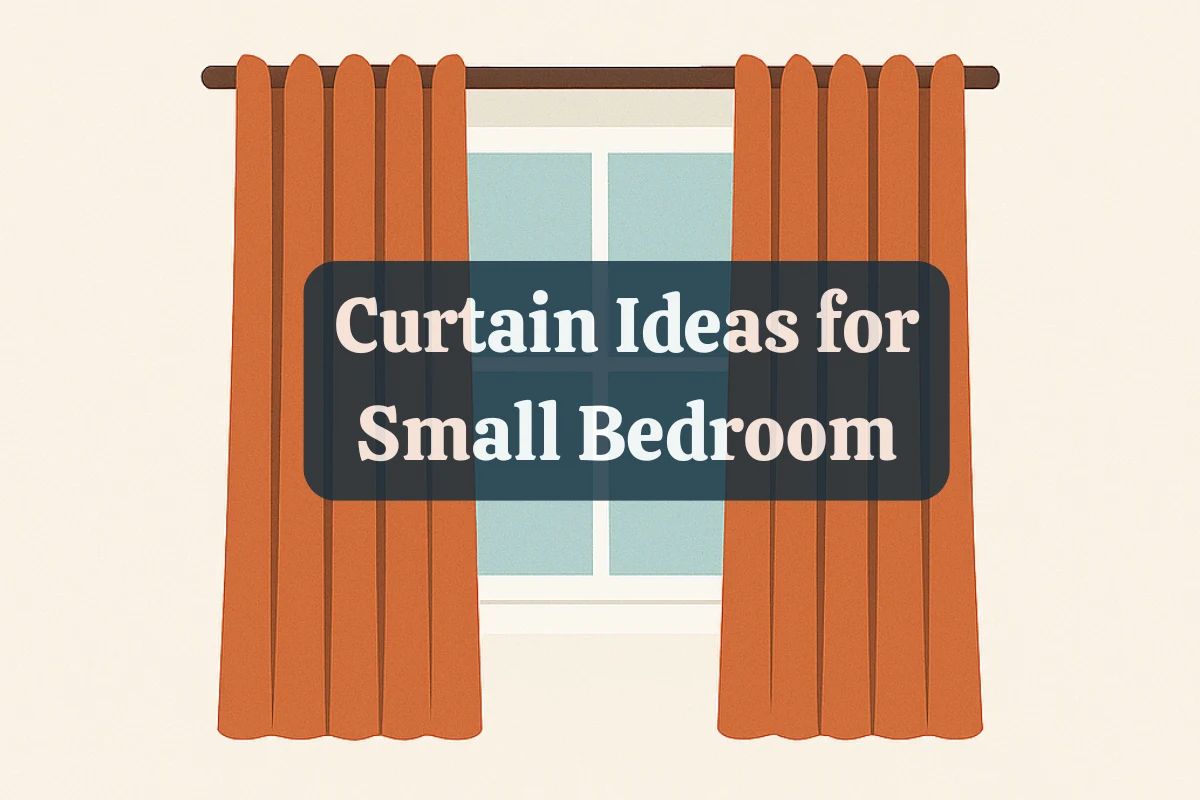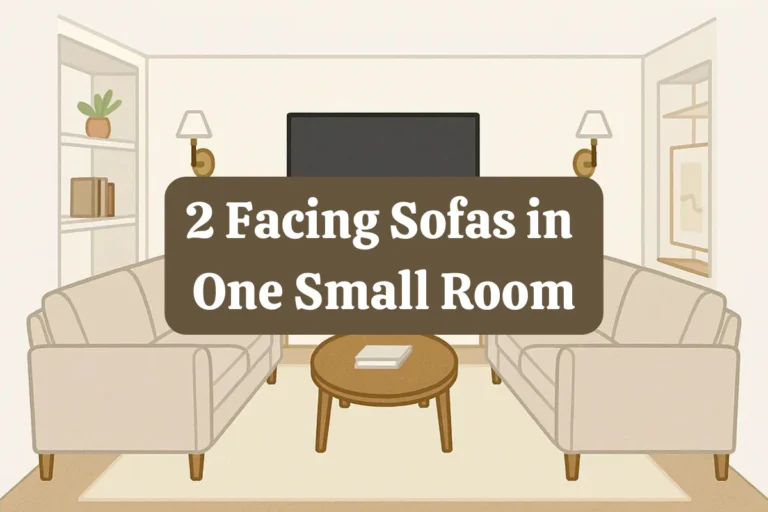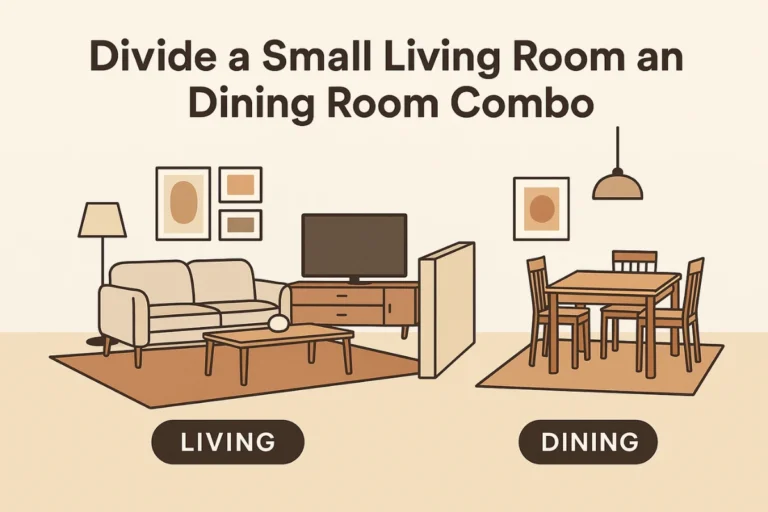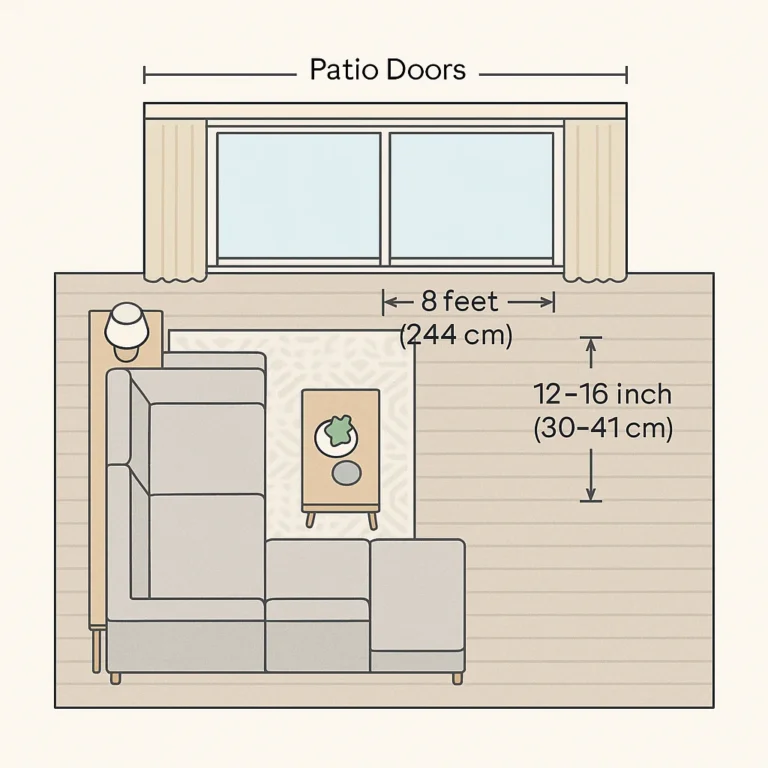Top 7 Curtain Ideas That Make a Small Bedroom Look Bigger
Tiny square footage doesn’t have to feel confining. The right window dressing can visually stretch walls, lift ceilings, and invite more daylight—all without renovating a thing.
Below are seven designer-approved curtain strategies that give a petite bedroom a room-to-breathe appeal.
1. Hang the Rod High — and Go Wide
Think of your curtain rod as a magician’s wand: where you place it decides where people “see” the edges of the room.
Go high. Mount the curtain rod as close to the ceiling as possible—ideally 4 to 8 inches above the window frame, or even at ceiling height. This lifts the eye and makes the walls feel taller.
Go wide. Extend the rod 6 to 12 inches beyond the window on each side. This allows the curtain panels to sit off the glass when open, making your window look broader and maximizing natural light.
Why it works: The fabric now frames—not covers—the glass. Your sightline absorbs extra wall above and beside the window, tricking the brain into reading taller, broader architecture.
Pro tip: Use slim, unobtrusive finials so the hardware disappears and the rod looks like a sleek architectural line.
2. Opt for Floor-Length Curtains Only
Short curtains are space killers—they cut the wall visually and make the room feel squat. Even if your window is small or sits high on the wall, go for floor-length panels every time. The long, unbroken line draws the eye from ceiling to floor, adding instant height and elegance.
If you worry about dust, hem panels so they stop ½ inch above the floor—still long enough for the illusion without gathering grime.
Why it works: Vertical lines stretch a space. When your curtains fall to the floor, they act like elongated columns, subtly making the walls feel taller.
Pro tip: Let the fabric “kiss” the floor or hover just half an inch above. Avoid bunching or puddling in tight rooms—it can look messy and eat up precious visual space.
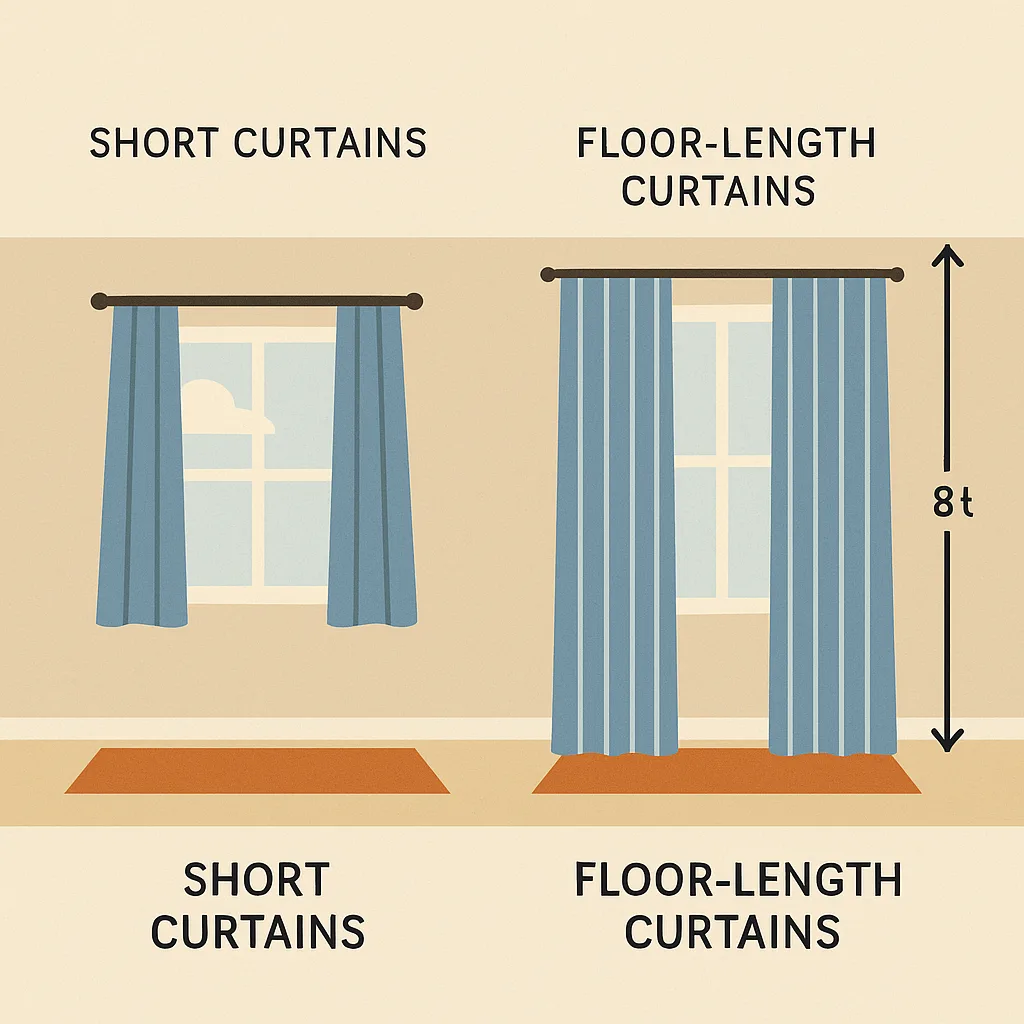
3. Choose Light, Airy Fabrics
Heavy curtains might feel luxurious in a grand living room, but in a small bedroom, they can weigh everything down—visually and literally.
Stick with lightweight, breathable fabrics like sheer voile, linen blends, or soft cotton gauze that let light in while gently diffusing it.
| Fabric | Why It Works | Extra Tip |
|---|---|---|
| Sheer polyester or voile | Filters sunlight while maintaining privacy. The fabric seems to “melt” into the window. | Choose a semi-opaque weave for street-facing windows. |
| Linen or linen blend | Diffuses harsh light while adding texture and breathability. | Pre-washed options drape better and are easier to clean. |
| Medium-weight cotton | Offers a soft balance between light filtration and structure. | Look for duck or twill cottons (7–9 oz) for a fuller, tailored feel. |
| Light silk or satin | Reflects ambient light, adding elegance without weight. | Add a lining to improve insulation without muting the shimmer. |
Why it works: Light-filtering fabrics create a soft glow and help the space feel open and breezy. The more sunlight you allow to pass through, the more spacious your room feels—no matter its actual size.
Pro tip: If privacy’s a concern, layer a sheer curtain behind a slightly heavier, neutral-toned panel. That way, you keep things light during the day and cozy at night—without closing off the room.
4. Stick to Soft, Neutral Colors
In a small room, natural light is gold—and your curtains should work with it, not against it. The fabric you choose can make or break the room’s sense of airiness.
- Off-whites, ivories, soft creams → Brighten and soften without overwhelming.
- Warm beiges or soft greyss → Add warmth or coolness while keeping things calm.
- Dusty pastels → Bring personality without adding visual clutter.
Why it works: High-contrast colors stop the eye, but neutrals allow it to travel. When your curtains match or softly echo the wall color, they blur the room’s boundaries and make the whole space feel lighter and larger.
Pro tip: For a barely-there, tailored look, choose curtains one or two shades lighter or darker than the walls. The subtle variation adds depth without breaking up the flow.
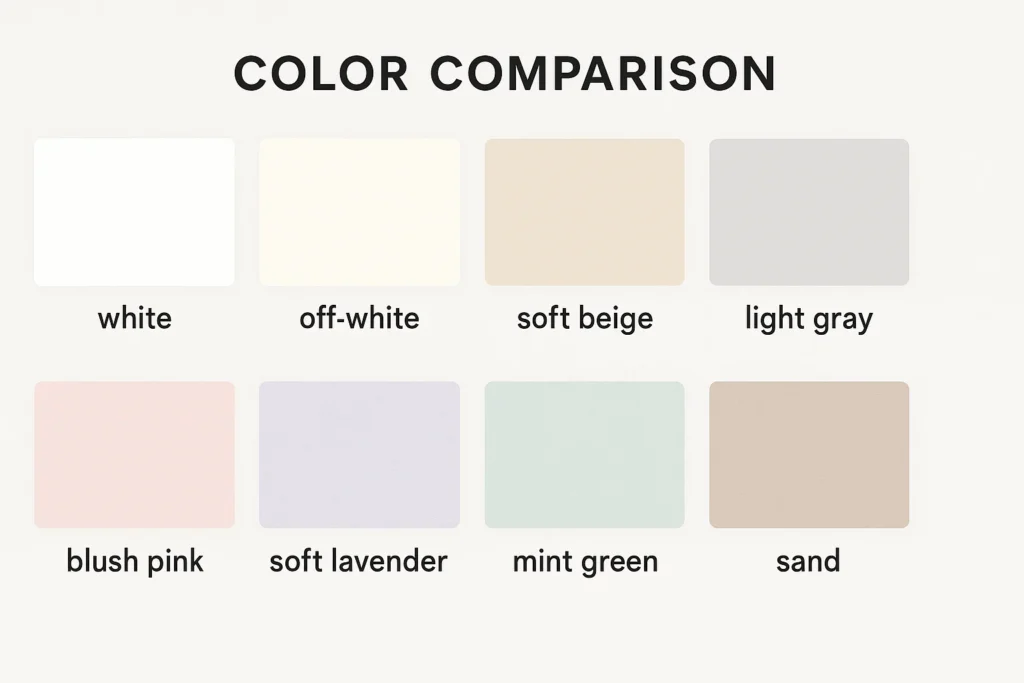
5. Use Vertical Patterns or Textures
Want your walls to feel taller without raising the ceiling? Let your curtains do the lifting—literally. Choose panels with vertical details like subtle stripes, stitched pleats, tonal embroidery, or even vertical folds in the fabric itself.
Why it works: Vertical lines naturally guide the eye upward, which helps elongate the look of your walls and makes the ceiling feel higher. It’s the same visual trick that pinstripes use in fashion—just applied to your windows.
Pro tip: Keep it understated. Tone-on-tone patterns or soft textures work best in small spaces—they add dimension without overwhelming the room with bold prints or busy designs.
6. Hide the Hardware With a Ceiling-Mount or Track
Instead of using a standard rod, try a ceiling-mounted curtain track or tuck the hardware inside a recessed valance. This makes the fabric appear to fall seamlessly from the ceiling, creating a cleaner and more continuous visual line.
Why it works: With no rod or rings interrupting the view, your curtains read like a soft, vertical wall—one that pulls the ceiling upward and simplifies the room’s lines. Fewer visual breaks = more visual space.
Bonus perk: Track systems let the curtain panels stack into a super-tight bundle—sometimes just 4 to 6 inches wide—so you get maximum daylight when they’re open and zero bulk when they’re drawn back.

7. Layer Sheers and Blackouts for Depth
Want your small bedroom to feel more dimensional and high-end? Try layering. On a double rod or dual track, hang sheers closest to the window and heavier blackout or dim-out curtains in front.
Why it works: Layering adds visual depth by creating a foreground and background effect—something a single flat panel just can’t do. This extra dimension makes the wall (and by extension, the room) feel more spacious and thoughtfully designed.
Practical edge: It’s not just about looks. Sheers let in soft, filtered light during the day while keeping things private. When you need full darkness—whether for sleep-ins or movie nights—just draw the blackout layer for total light control.
With just a few well-chosen curtain upgrades, your bedroom can feel brighter, taller, and more inviting—no renovation needed. When light, lines, and fabric all work together, even the smallest room can feel like a peaceful escape.
